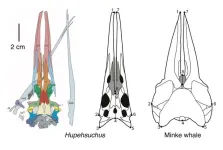(Press-News.org) Sociality plays a pivotal role in the lives of many animal species, influencing mating success, survival rates, and susceptibility to diseases. In the challenging environment of bighorn sheep populations, sociality is believed to have evolved for its fitness benefits. However, the delicate balance of costs and benefits associated with sociality can vary at different scales, leading to diverse interpretations of animal behavior.
New research titled "Bighorn sheep associations: understanding tradeoffs of sociality and implications for disease transmission" has been published in PeerJ Life & Environment. The study, conducted by the U.S. Geological Survey and National Park Service and led by Marie Tosa, now with Oregon State University, explores the intricate relationship between social behavior, disease transmission, and survival rates among bighorn sheep (Ovis canadensis).
The research focused on understanding the factors influencing direct contact rates among bighorn sheep in the vicinity of the Waterton-Glacier International Peace Park. The study incorporated both intrinsic factors, such as relatedness and age, and extrinsic factors like land cover type and season. During the period of 2002 to 2012, male and female bighorn sheep were equipped with GPS collars to monitor their movements and interactions.
Through the analysis of direct contact networks, the researchers identified significant barriers in the bighorn sheep population, which corresponded with prior disease exposure metrics. Interestingly, more direct contacts were observed between same-sex dyads compared to female-male dyads. Additionally, bighorn groups with overlapping summer home ranges were found to have higher direct contact rates.
The study revealed that direct contacts were most prevalent during the winter-spring season, coinciding with the period when bighorn sheep traveled at low speeds and an adequate number of individuals were collared in the area. Moreover, the probabilities of association were higher in regions with greater predation risk, highlighting the influence of survival-related variables on contact probabilities.
Crucially, the research established a clear link between habitat quality and direct contact probabilities. Factors such as terrain ruggedness, distance to escape terrain, and canopy cover were identified as key drivers of differences in contact probabilities among different bighorn sheep dyads.
Tosa emphasizes the importance of contact analysis in understanding the fitness tradeoffs of sociality and the potential for disease transmission among bighorn sheep populations. The findings provide valuable insights into the delicate balance of social behavior and disease dynamics in challenging environments.
The research not only advances our understanding of bighorn sheep associations but also contributes to broader discussions about the role of sociality in the dynamics of wildlife populations. It highlights the intricate web of interactions among animals and their environment and underscores the relevance of conservation efforts in safeguarding wildlife populations and mitigating disease risks.
END
Bighorn sheep associations: understanding tradeoffs of sociality and implications for disease transmission
2023-08-08
ELSE PRESS RELEASES FROM THIS DATE:
Lead poisoning from Ayurvedic medicines: rare but cautionary
2023-08-08
An article in CMAJ (Canadian Medical Association Journal) highlights a case of lead toxicity from Ayurvedic medicines in a young woman, and the complexity in diagnosing the rare condition https://www.cmaj.ca/lookup/doi/10.1503/cmaj.230592.
"Given that lead toxicity is uncommon and its presentation nonspecific, patients are often seen by many health care providers before the diagnosis is made," writes Dr. Julian Gitelman, Dalla Lana School of Public Health, University of Toronto, with coauthors. "A careful exposure history is essential to suggest the diagnosis."
The patient, a 39-year-old woman, visited the emergency department 3 times in 6 weeks ...
Holidaymakers be warned: Short, intense sun-seeking trips can disrupt skin’s microbiome
2023-08-08
Skin, the largest organ of the human body, is home to a vast array of bacteria, fungi, and viruses – microorganisms that compose the skin microbiota. Among other things, these microbial populations, which are organized in complex community structures, protect against pathogens.
Prolonged exposure to UVR is associated with damage to DNA in skin cells, inflammation, and premature skin aging, yet intentional sun-seeking behaviors remain common.
Due to a lack of studies focusing on how individual behavior influences UVR-associated microbiota shifts, and how this may relate to skin health, ...
New Antarctic extremes ‘virtually certain’ as world warms
2023-08-08
Extreme events in Antarctica such as ocean heatwaves and ice loss will almost certainly become more common and more severe, researchers say.
With drastic action now needed to limit global warming to the Paris Agreement target of 1.5°C, the scientists warn that recent extremes in Antarctica may be the tip of the iceberg.
The study reviews evidence of extreme events in Antarctica and the Southern Ocean, including weather, sea ice, ocean temperatures, glacier and ice shelf systems, and biodiversity on land and sea.
It concludes that Antarctica’s fragile environments “may well be subject to considerable stress and ...
Three-dimensional printing achieves precision light control for structural coloration
2023-08-08
The world's first 3D printing technology that can be used in transparent displays and AR devices has been developed, which implements the physical phenomenon of chameleon's changing skin color or peacock's beautiful feather color.
Dr. Jaeyeon Pyo’s team at KERI has succeeded in realizing a three-dimensional diffraction grating that can precisely control the path of light based on 'nanoscale 3D printing technology'. This is a novel technology that can utilize the principle of structural color observed in nature ...
Well-designed digital health platforms can improve the quality of life for people with Parkinson’s disease and their caregivers
2023-08-08
Philadelphia, August 8, 2023 – There is a need to better deliver information on medical nutrition therapy for patients with Parkinson’s disease (PD). Findings of a new study in the Journal of Nutrition Education and Behavior, published by Elsevier, show digital health serves as an additional health service resource, which increases the healthcare provider’s abilities to collect current visual and objective data, thereby decreasing patient and caregiver burden and medical expenses.
Lead author Dara Lyn LoBuono, PhD, RD, assistant professor in health and exercise science at Rowan ...
Bat activity lower at solar farm sites, study finds
2023-08-08
The activity level of six bat species was significantly reduced at solar farm sites, researchers have observed.
Their findings, published today in Journal of Applied Ecology, have the potential to impact and inform planning legislation and policy so that the benefits of solar power are reaped without impacting wildlife.
Renewable technologies are important in meeting energy demands sustainably. This is of vital importance given the roles of fossil fuels in producing carbon dioxide, a key driver of climate change. Renewable energy is growing at a rapid pace globally, with solar photovoltaic power ...
New model reduces bias and enhances trust in AI decision-making and knowledge organization
2023-08-08
University of Waterloo researchers have developed a new explainable artificial intelligence (AI) model to reduce bias and enhance trust and accuracy in machine learning-generated decision-making and knowledge organization.
Traditional machine learning models often yield biased results, favouring groups with large populations or being influenced by unknown factors, and take extensive effort to identify from instances containing patterns and sub-patterns coming from different classes or primary sources.
The medical field is one area where there are severe implications for biased machine learning results. Hospital staff and medical ...
Whale like filter-feeding discovered in prehistoric marine reptile
2023-08-08
A remarkable new fossil from China reveals for the first time that a group of reptiles were already using whale-like filter feeding 250 million years ago.
New research by a team from China and the UK has shown details of the skull of an early marine reptile called Hupehsuchus that indicate it had soft structures such as an expanding throat region to allow it to engulf great masses of water containing shrimp-like prey, and baleen whale-like structures to filter food items as it swam forward.
The team also found that the Hupehsuchus skulls show the same grooves and notches along the edges of its jaws similar to baleen whales, ...
New research shines light on how COVID-19 vaccination reduces severity and mortality after breakthrough infections
2023-08-08
In one of the largest studies of its kind, researchers provide answers to whether COVID-19 vaccinations reduce sickness and mortality following infection with SARS-CoV-2.
The study published today in The Lancet Microbe found among individuals recently infected with SARS-CoV-2, those who were fully vaccinated had lower concentrations of almost all inflammation markers (cytokines and chemokines) than those who were unvaccinated in the short-term and long-term after symptomatic SARS-CoV-2 infection.
While vaccinations don’t entirely prevent infection, this study demonstrates that vaccination significantly reduces morbidity and mortality by significantly reducing elevated levels ...
Air pollution linked to higher mental health service use by people with dementia
2023-08-08
Exposure to relatively high levels of air pollution is linked to increased use of community mental health services by people with dementia, finds a large long term study focusing on a large area of London with heavy traffic and published in the open access journal BMJ Mental Health.
Cutting levels of nitrogen dioxide and particulate matter might reduce demand in urban areas and help free up resources in overstretched psychiatric services, suggest the researchers.
An estimated 850,000 people are living with dementia in the UK, with the number projected to increase to 2 million by 2050, in tandem with the ageing of the population. Dementia is already the leading cause of death in the ...






